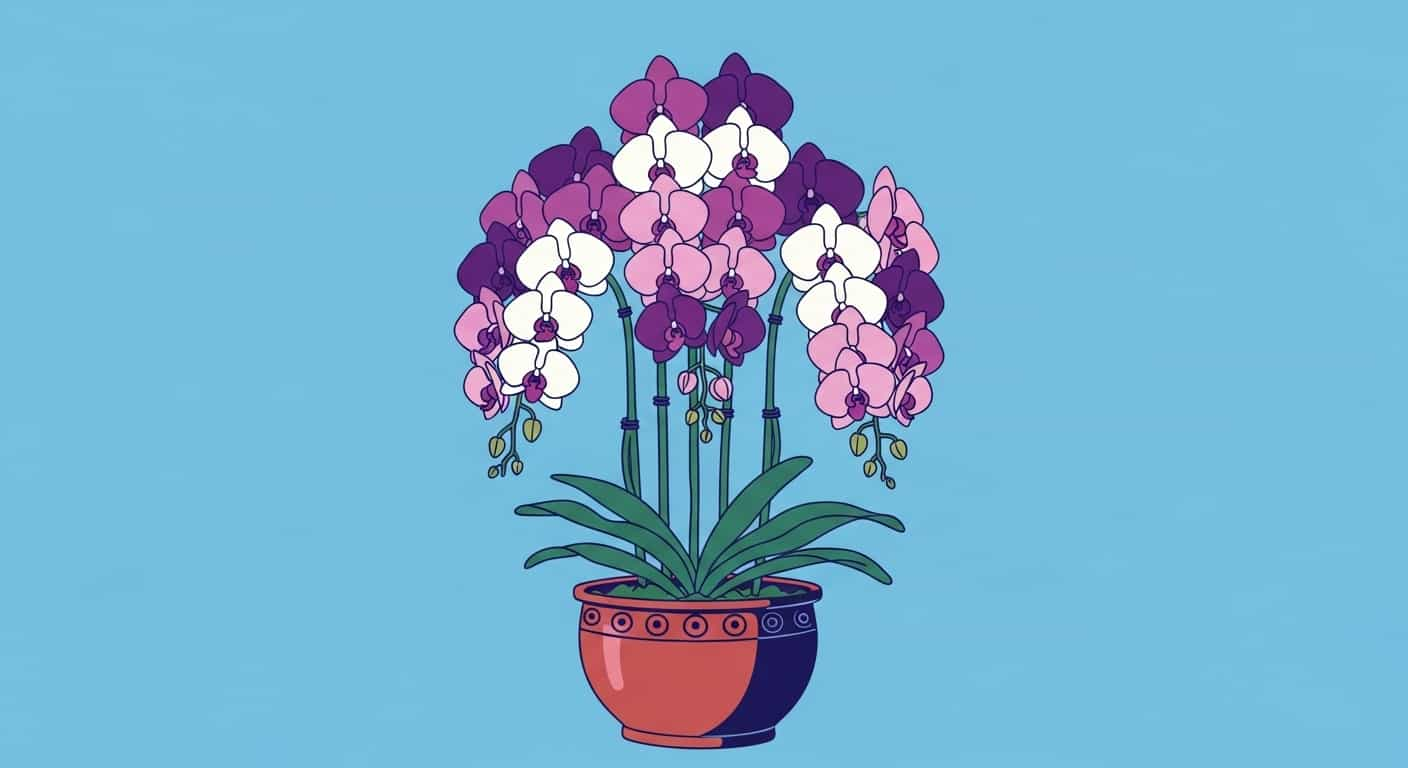After mastering the ever-popular Phalaenopsis, many budding orchid enthusiasts look for their next challenge. The Dendrobium genus offers a perfect next step. This incredibly diverse group contains over 1,800 species, presenting a dazzling variety of shapes, sizes, and colors. While some can be tricky, many types are wonderfully easy to grow, rewarding you with spectacular sprays of long-lasting flowers.
This guide will serve as your introduction to the world of Dendrobiums. We will focus on the beginner-friendly “Phalaenopsis-type” Dendrobiums, which are known for their beauty and resilience. You will learn essential Dendrobium orchid care, discover the key ways to differentiate them from other popular orchids, and gain the confidence you need to help these stunning plants flourish.
What Are Dendrobium Orchids?
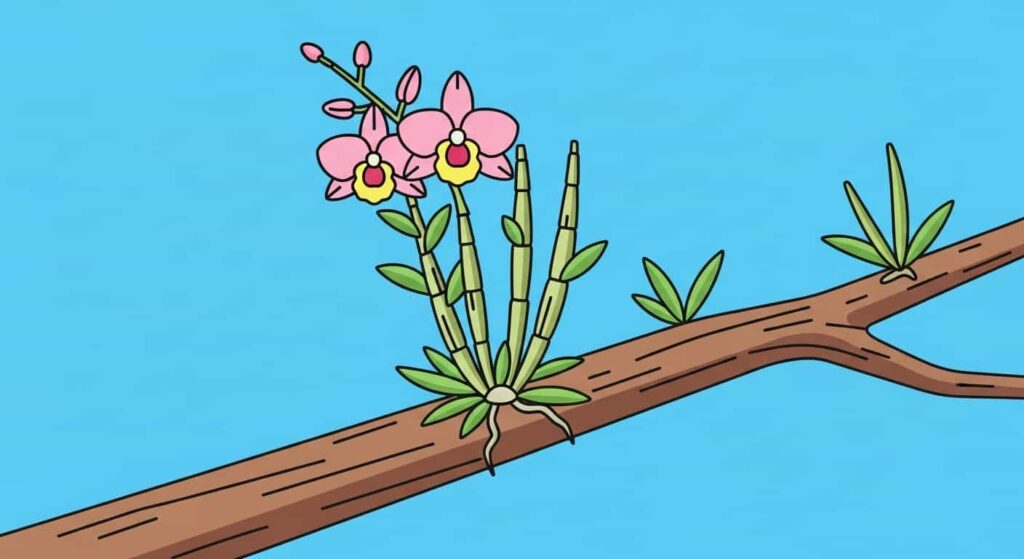
The name “Dendrobium” comes from the Greek words dendron (tree) and bios (life), meaning “one who lives on a tree.” This perfectly describes their epiphytic nature. These orchids grow on trees in their native habitats, which stretch from Asia and Australia to the Pacific islands.
The most noticeable feature of a Dendrobium is its growth structure. Instead of growing from a central crown like a Phalaenopsis, Dendrobiums grow from upright, cane-like stems called pseudobulbs. These canes store water and nutrients, making the plants resilient to periods of drought. New growth emerges from the base of old canes, allowing the plant to expand sideways over time.
For beginners, the best place to start is with “Phalaenopsis-type” or “hard-caned” Dendrobiums. These hybrids are specifically bred for their large, round flowers that resemble those of a Phalaenopsis and for their adaptability to typical indoor growing conditions.
How to Differentiate Between Dendrobium and Phalaenopsis
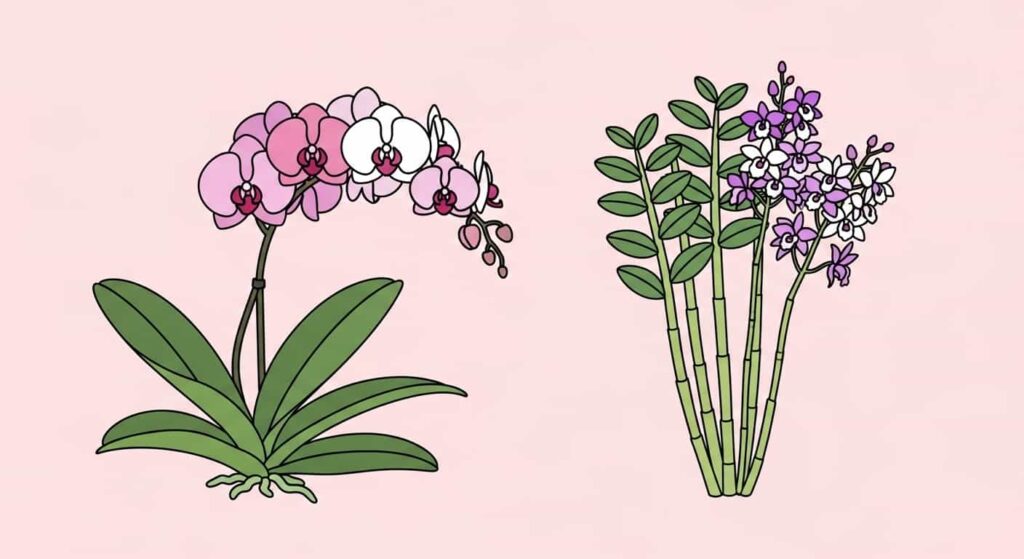
At first glance, the flowers might look similar, but the plants themselves are quite different. Knowing how to tell them apart is a key step in providing the right care.
- Growth Habit: This is the most obvious difference. A Phalaenopsis grows from a single central point (monopodial), with leaves emerging one on top of the other. A Dendrobium has a sympodial growth habit, meaning it sends up multiple upright canes from a horizontal rhizome at the base.
- Leaves: Phalaenopsis orchids have broad, soft, and floppy leaves that grow from the base. Dendrobiums have smaller, more pointed leaves that grow alternately all the way up their tall canes.
- Water Storage: Dendrobiums have prominent pseudobulbs (the canes) that store water. Phalaenopsis orchids do not have pseudobulbs; they store water in their thick, fleshy leaves.
- Flower Stems: On a Phalaenopsis, the flower spike emerges from between the leaves at the base. On a Phalaenopsis-type Dendrobium, the flower spike grows from the top of the cane, near the uppermost leaves.
Understanding these distinctions is crucial because it influences how you water, pot, and care for each plant.
Essentials of Dendrobium Orchid Care
Caring for the beginner-friendly Phalaenopsis-type Dendrobiums is straightforward. They enjoy conditions similar to Phalaenopsis but with a few key adjustments, especially regarding light and pot size.
Light: Bright and Abundant

Dendrobiums love light, generally needing more than a Phalaenopsis but less than a Cattleya. They flourish in bright, filtered sunlight.
- Ideal Location: An east-facing window is a good choice, providing bright morning light. A south- or west-facing window can also work well, as long as you use a sheer curtain to protect the plant from the harsh, direct sun of midday.
- Leaf Color: The leaves should be a healthy, medium green. If they are very dark green, the plant likely isn’t getting enough light to produce flowers. If the leaves or canes start to turn yellow, it may be receiving too much direct sun.
Watering: Allow for a Dry-Out Period
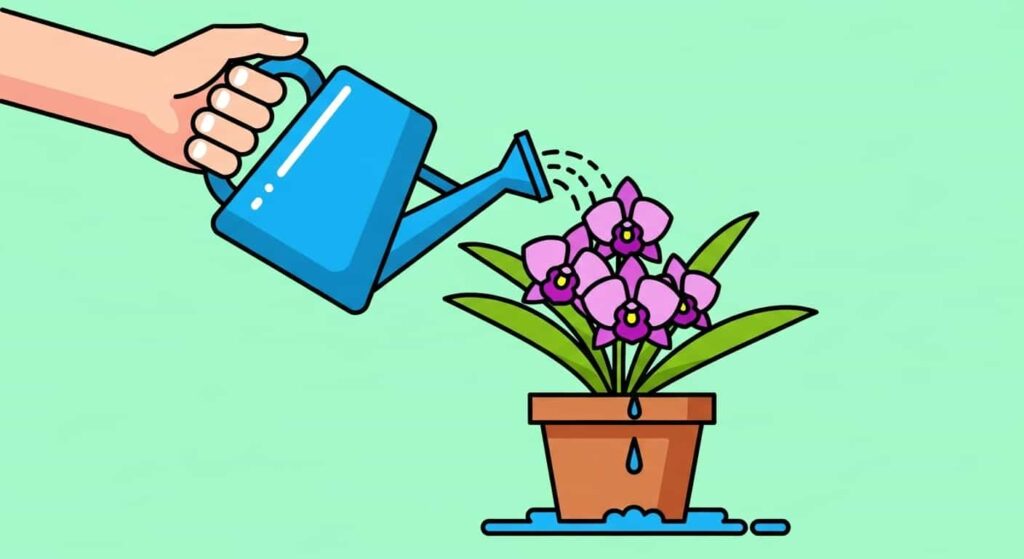
Thanks to their water-storing canes, Dendrobiums are quite tolerant of drying out. Overwatering is a greater risk than underwatering.
- When to Water: Water your Dendrobium only when the potting medium is completely dry. You can test this by lifting the pot—it will feel noticeably light. You can also use a wooden skewer inserted into the mix; if it comes out clean and dry, it’s time to water.
- How to Water: When you do water, do it thoroughly. Take the plant to the sink and flush the pot with lukewarm water for 30-60 seconds, allowing it to drain completely. This ensures all the roots are hydrated.
Potting Mix and Potting
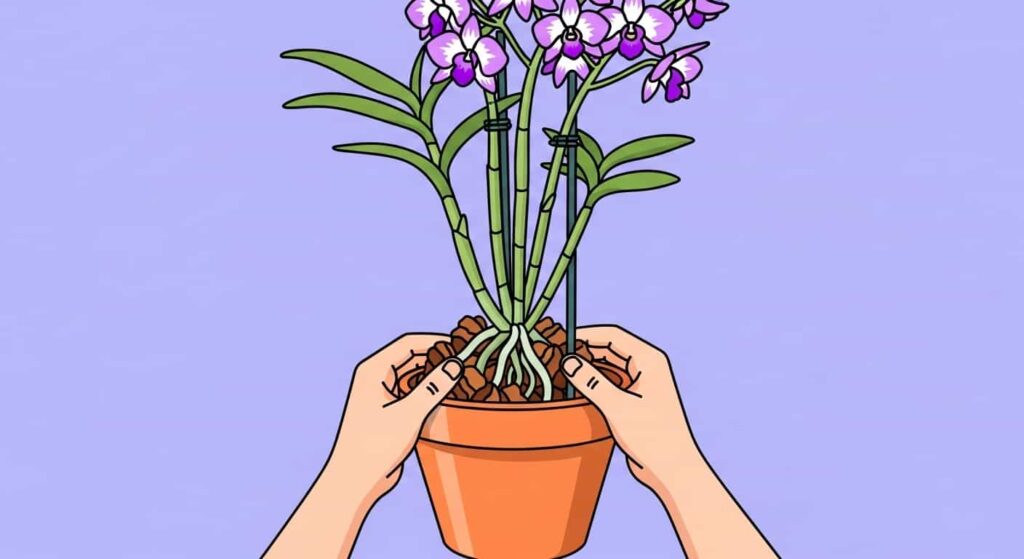
Dendrobiums thrive when their roots are snug and have excellent air circulation.
- Best Potting Mix: Use a medium-grade orchid mix made primarily of fir bark. This provides the fast drainage and airflow that Dendrobium roots require.
- Potting Preferences: Dendrobiums bloom best when they are slightly pot-bound. A common mistake is moving them into a pot that is too large. When repotting, select a new pot that is only about one inch wider than the old one. A heavy clay pot is an excellent choice as it provides stability for the top-heavy canes and helps the mix dry out faster.
- When to Repot: Repot your Dendrobium every two to three years, or when the bark mix starts to break down. The best time is after the plant has finished flowering and you see new root tips emerging from the base of the newest cane.
Dendrobium Care Tips for Beginners: Success and Blooms
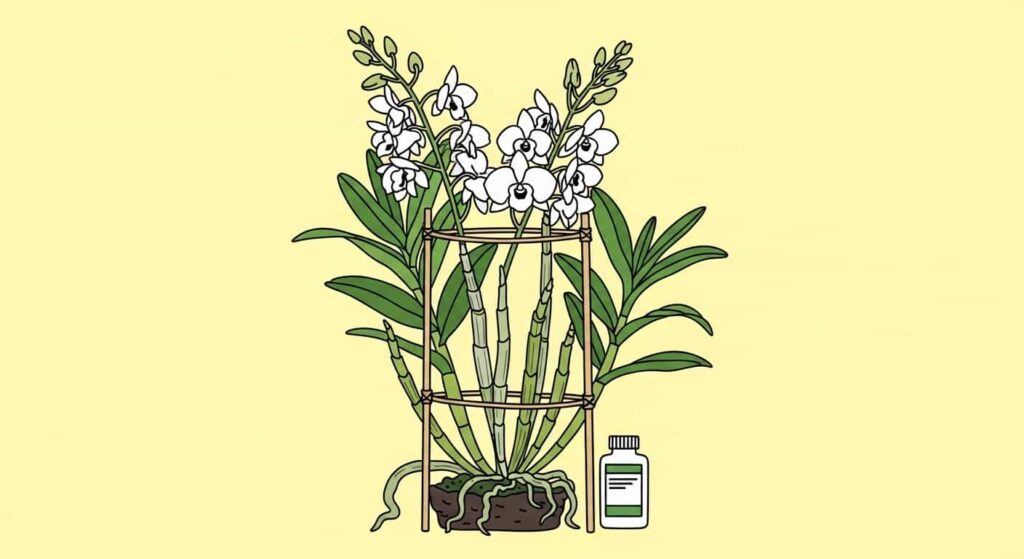
With the basics covered, a few extra tips can help you achieve consistent success and beautiful blooms.
- Fertilize During Growth: Dendrobiums are heavy feeders during their active growing season (typically spring and summer). Use a balanced orchid fertilizer at half-strength with every other watering to encourage strong new cane growth.
- Provide Stability: As the canes grow tall, the plant can become top-heavy. You can use a bamboo stake and plant clips to gently support the canes and keep the plant from tipping over.
- Don’t Cut Old Canes: Unlike a spent flower spike, the old canes on a Dendrobium serve a purpose. They continue to store water and nutrients for the rest of the plant. Only cut off canes that are completely yellow, shriveled, and dead.
- Winter Rest (For Some Types): While the Phalaenopsis-type Dendrobiums we’ve focused on are warm-growing and don’t require a hard winter rest, other types (like Dendrobium nobile) do. These “soft-caned” types need a cool, dry winter rest period with reduced water to trigger blooming. Always identify your Dendrobium type to provide the correct care.
A Rewarding Addition to Your Collection

Dendrobiums are spectacular orchids that offer a new and exciting experience for anyone ready to expand their collection. Their upright growth, beautiful foliage, and stunning cascades of flowers provide a different kind of beauty compared to the familiar Phalaenopsis.
By choosing a beginner-friendly Phalaenopsis-type hybrid and providing the bright light and distinct watering cycle it needs, you can easily succeed. Embrace the challenge, and you will be rewarded with the breathtaking sight of a Dendrobium in full, glorious bloom.

